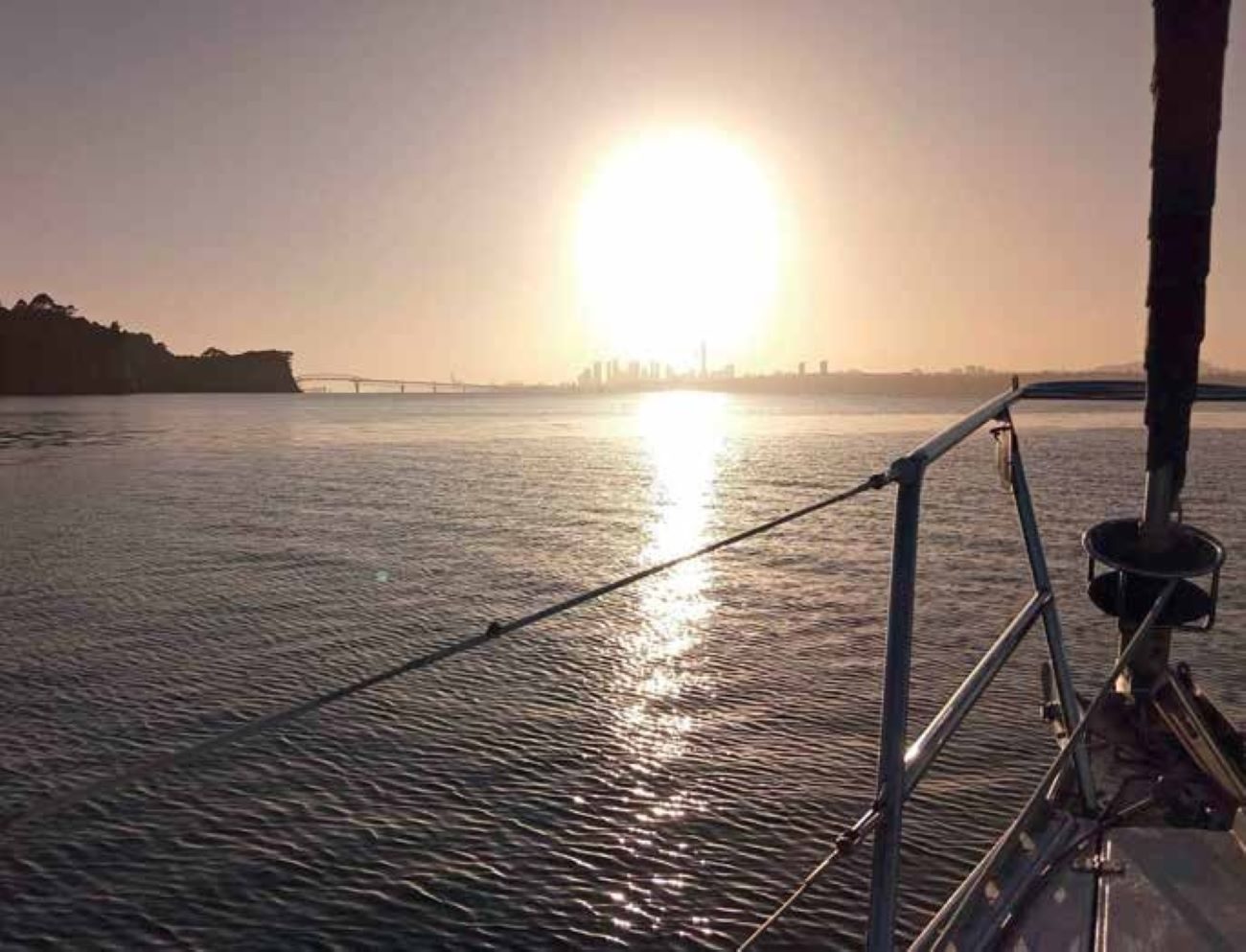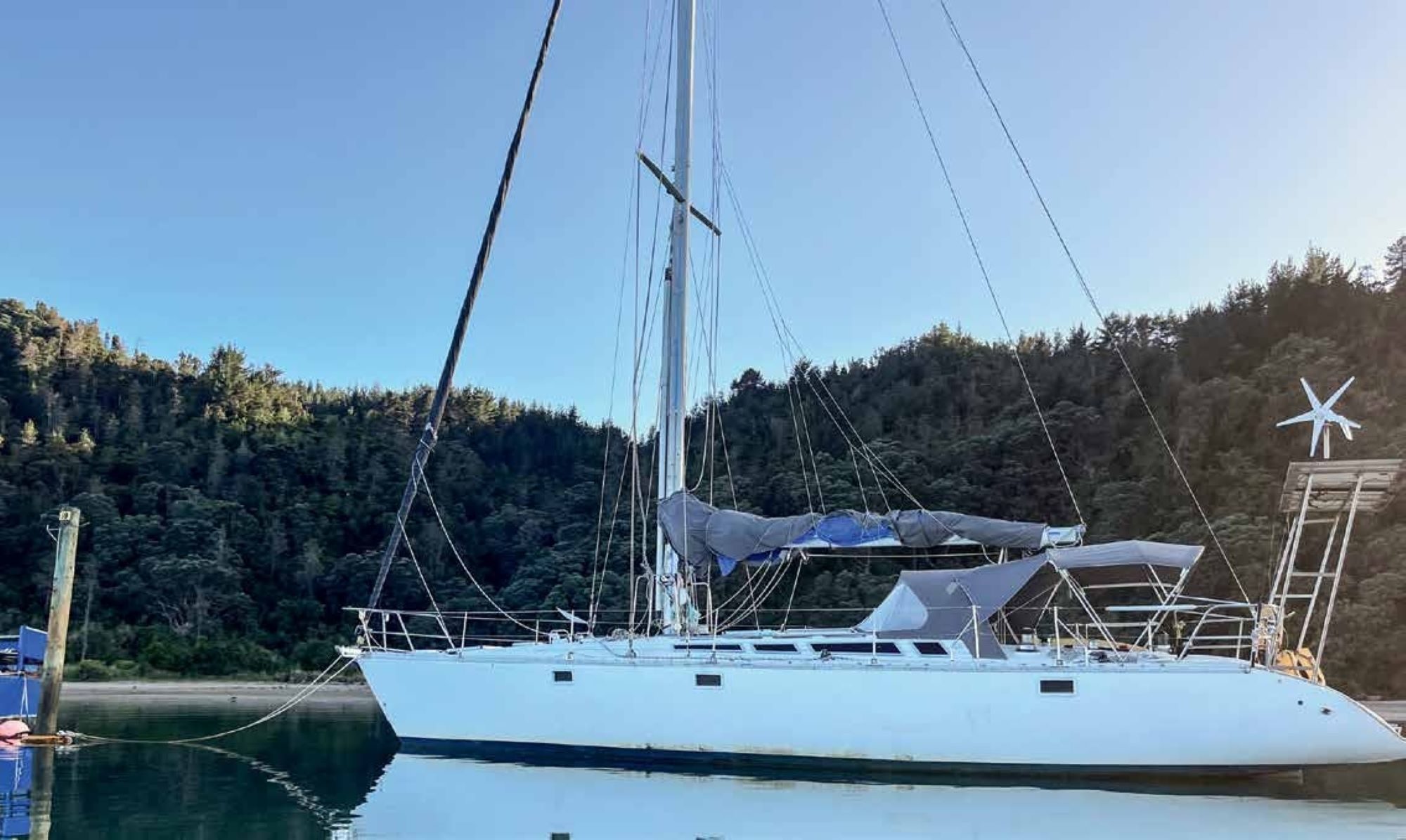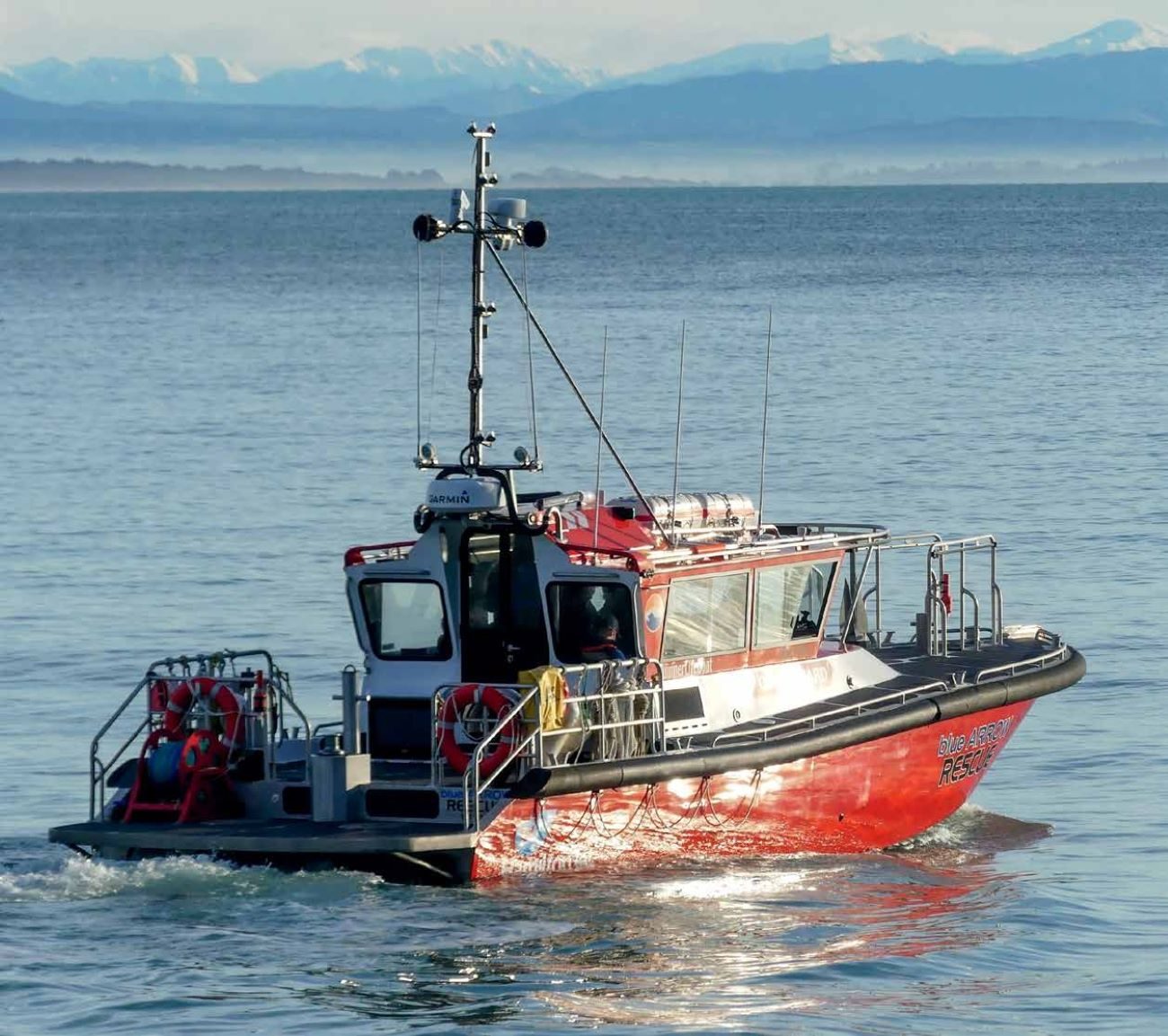

As we kissed our keel ever so slightly on the sandbar the pit of my stomach sank. Had our luck run out at the last possible moment? How did we get to this unenviable point in our journey? Well, we have to rewind a couple of days.
We decided to move Sauvage – our Jeanneau Sunkiss 49 yacht – from Auckland’s beautiful Catalina Bay (Hobsonville Point) to the slightly more accessible (for us) Whangamata at the end of winter. Whangamata is the perfect summer home – great for our teenage kids, and close to my siblings’ places.
We’d found a buoy at Whangamata for a 50-foot boat (Trademe) – located just inside the entrance to the Wentworth River. It was a pole mooring – the first time we had ever considered this style of mooring.
Anyone who knows Whangamata Harbour will be familiar with its tidal flows. At low-tide there are wide areas of generously exposed sand bars. At mid-tide these are covered with shallow water. High-tide is the ideal time to depart and arrive. Our boat’s draft (2.6m laden) meant there was little negotiation about our arrival time.


The journey from Catalina Bay to Whangamata would take us two full days of sailing – as long as everything went well. Kirsten planned the voyage: a mad dash after we finished work around 2pm on Friday up to Catalina Bay, leaving a three-and-a-half hour sail to Waiheke Island’s Owhanake Bay, followed by a nine-and-a-half hour sail on Saturday through Colville Channel to Great Mercury Island.
And then on Sunday a seven-hour sail onto Whangamata with an expected high tide at 5:30pm. We had planned for and expected calm weather for the passage through Colville Channel but a reasonable wind in the Hauraki Gulf and down the Coromandel.
It didn’t start well. We arrived at Catalina Bay at dusk on Friday, some two hours behind the original schedule. But that’s what plans are made for – changing. If we could catch the wind, our sail from Catalina Bay straight through to Great Mercury Island would now be a 13-hour sail and very doable if everything went as planned.

Early Saturday morning we farewelled Catalina Bay. The sun was rising, the skies were clear, and we had zero wind.
Kirsten said: “That’s okay as there’s some in the Gulf”. With those words of knowledge deeply ingrained I worked out how much diesel we would need for the trip with a buffer for safety, leaving little in the tanks for the end so Sauvage would be lighter, riding higher to get over the Whangamata sandbar.
It was beautiful. The perfect day for motor sailing. The perfect day for fishing in Motuihe Channel. But still no wind – not perfect for sailing. And still no wind as we headed northeast of Waiheke Island.
By now I was concerned, my calculation for diesel consumption had been based on actual sailing. But the weather was not cooperating, so we stopped and sat in the beautifully calm water and had lunch… hoping the wind would come up.
It didn’t. Onwards we must continue if we were to get through Colville Channel today. Tomorrow’s weather was not predicted to be as good. And we had time constraints – we needed to be back in Cambridge by Monday morning. This was no summer cruise.


So up went the mainsail and on went the motor, and onwards we continued. Any chance of genoa action, we unfurled the genoa. Then in came the genoa the moment our tiny bit of wind departed. We were making slow progress. Four knots at the best of times. Slowly, slowly we inched forwards.
We made it to Colville Channel mid-to-late afternoon. We were met with calm conditions (by Colville Channel standards) – little wind and modest easterly swells. By early evening we’d made it to the east side of Colville Channel. The swells were still coming and although we had hoped to make it through to Great Mercury Island, we knew it was not going to happen: not enough daylight to get us there and set up.
I was now deeply concerned by our fuel level. We were showing less than a quarter of a tank of diesel and while I’d done a decent calculation we’d motored more than expected already. I really hoped tomorrow’s promised winds would show up.
We initially sought a night’s anchorage at Port Charles but closer inspection revealed buoys at the entrance (maybe a fish farm?) – but we didn’t want to waste fuel finding out. A quick replan brought us to Little Bay, a sheltered bay just east of Waikawau Bay. We had to consider the swells – and the wind which would change to a westerly overnight.
Anchoring in semi-darkness we settled in for the night. Amazingly this was the perfect anchorage. Although exposed, Little Bay was protected by a rock outcrop which provided protection from what the Pacific would chuck at us, and sheltered from westerly winds.

Our anchor held wonderfully in the quite strong winds. What a blessing, as we are still due to replace our traditional anchor with the Sarca anchor and attached swivel head we have our eyes on.
We were up early the next morning. The westerly wind was up – YES! And the swells had diminished. We faced another long sail, with 5:30pm being our absolute end-time. Main and genoa sails were raised and we made steady progress in the 17-21 knots wind. Well, for a while…
We hit the doldrums again as we neared Needle Rock. We were going nowhere fast, the odd gust but very little to sail with. As much as I did not want to, I had to turn the motor on again.
Rounding into Mercury Bay (the precursor to Whitianga Harbour) we were suddenly hit by strong westerly winds. The sudden change in weather caught us by surprise but we quickly unfurled our genoa and turned off our motor, hoping the winds would take us far.
Every time we turned on the motor my heart did a flip: would we have enough diesel in our tanks to get to Whangamata? There was no turning back, no stopping in at the nearest marina. In retrospect we could have anchored Sauvage and sent crew in with the tender and a diesel can to a seaside town to find some fuel. But I didn’t fancy anchoring in the still-rolling swells.

A little south of Hot Water Beach things got tense. No wind – and we had a 4:30pm to 6:30pm window to make the high tide deadline at Whangamata but no wind. That meant a journey of 21nm with the diesel – and I was sure it was now running on the smell of an oily rag.
We had to make a call: anchor for the day and wait until tomorrow, or push forward under motor to complete the job. The next day’s weather looked much worse, rain and very little wind – I started the motor and made a number of contingency plans.
If we ran out of diesel, we had a number of backup anchorages and had decided that we could rope the tender to the side of the yacht, using the tender motor as our power source, at least if we were close. For now, we powered on.
It was uneventful, the occasional short blast of wind (which we tried to make the most of), down the coast, each minute making progress, but with the knowledge that any minute may be our last under power.
Finally we arrived at the entrance to Whangamata. The ‘oily rag’ worked well – we even had some fuel to spare. We pulled into the harbour at 7:30pm, about an-hour-and-a-half after high tide.

Being unfamiliar with the river, my heart nearly died when we motored up onto the edge of the sandbar. To be fair it wasn’t clearly marked. A little unsure of how stuck we were, I attempted to move forward but we went nowhere.
A lovely local gentleman came past on his kayak and informed us we should be in the deeper channel a couple of metres closer to the jetty. I managed to manoeuvre us off the edge of the sand bank and we were happily on our way again, no damage done.
Following the port-to-port rules of entry (and exit) we drove to our mooring space. With a little effort (this being our first attempt to moor between poles), we managed to get Sauvage tied up. Whew! We had made it.
One-and-a-half hours after we had planned, much less diesel than we planned (in the end a good thing to get us over the bar), no more water in the tanks. Time for sure for a nervecalming, celebratory drink! BNZ
NEXT MONTH
We explore Whangamata: we meet some excellent Boating NZ readers, clean the outboard carburettor (after the kids filled the two-stroke with diesel) and enjoy life on the Coromandel. facebook.com/SVSauvage



